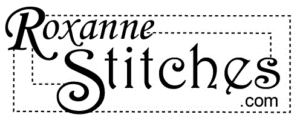HI Everyone!! I was Happy to hear from so many of you that you liked my New Video Series!! Thanks for all the nice messages and emails. This next video is “by request”. Many of you have asked me for a video on how to make buttonholes, so here it is!! I hope you find it helpful!


I start by marking where I want my buttonholes to start on my shirt. I mark a straight line all the way down where the center of the buttonhole will be stitched. I used to just mark the individual buttonholes, but found they end up more uniform if I make a continuous line. I also only mark the start of the buttonhole, not the other end. I let the foot determine the end of the buttonhole providing I did a “test” buttonhole to verify.

I also go one step further when making buttonholes on my garments or projects. I borrowed this tip from something I do when I do machine embroidery. If you think about it, a buttonhole is sort of like machine embroidery. It’s a somewhat closely stitched zigzag meant to enclose the fabric inside the stitching to be cut open later. As in machine embroidery, you don’t want your lovely stitches to sink down into the fibers of the fabric. You want them to sit on top of the fabric neatly. Well it’s the same with buttonholes. You want your buttonhole to sit nicely and smoothly on your garment or project. That’s why I use a water soluble, transparent stabilizer on top and bottom of the fabric as I stitch the buttonhole.

The buttonhole foot for the Singer Quantum Stylist 9960 has a special sliding section in the back of the attachment for inserting your actual button. By doing so, you skip the step of having to calculate the size buttonhole you’ll need for your button. I do always suggest however, that you do a “test buttonhole” to make sure. You would hate to spend time on a making garment and sew all of your buttonholes to find out for some reason they didn’t work with your button. This is unlikely, but could happen. If your button has a long shank or is a very thick button, this could be the case. Better safe than sorry!!



Another great video, Roxanne… I love this bottonhole foot and I would hate to have to give it up!
I am so enjoying your videos. I don't have a Singer Quantum but I find the videos very interesting and educational. Your machine makes a beautiful buttonhole, wish my machine did. Some day could you show us how it embroiders the alphabet. Thanks for the tip about using soluble stabilizer on the top and bottom, I'm going to try that. I also like how you draw a line all the way down and mark the starting points of the buttons. Thanks again for sharing.
Thanks Monique! I love it too and won't go back to my old foot for anything!!
Hi Miriam! I'm so happy to hear you're enjoying this series!! I've gotten other requests as well to do a video on the alphabet so stay tuned!! Thanks!
I've always used an old Kenmore with the really old cartridges until this year. One of the things I looked for in a new-to-me sewing machine was the one-step buttonhole ability. This series has really taught me a lot. THanks for posting.
You're Welcome Nothy Lane!! I'm Happy to hear you learned from my video!!
Good day I just stared learning from your videos and am loving them so far.
I just bought this Machine can you tell me where can I purchase the buttonhole foot with underplate
Thanks Lana!
Your machine should have come with the button hole attachment and under plate. Check inside the compartment of the accessory case. Page 14 in your manual
Oh my I found it along with other accessories. Thanks much
I see two parts to the buttonhole foot, one mostly plastic and one metal. What is the function of the metal slide?